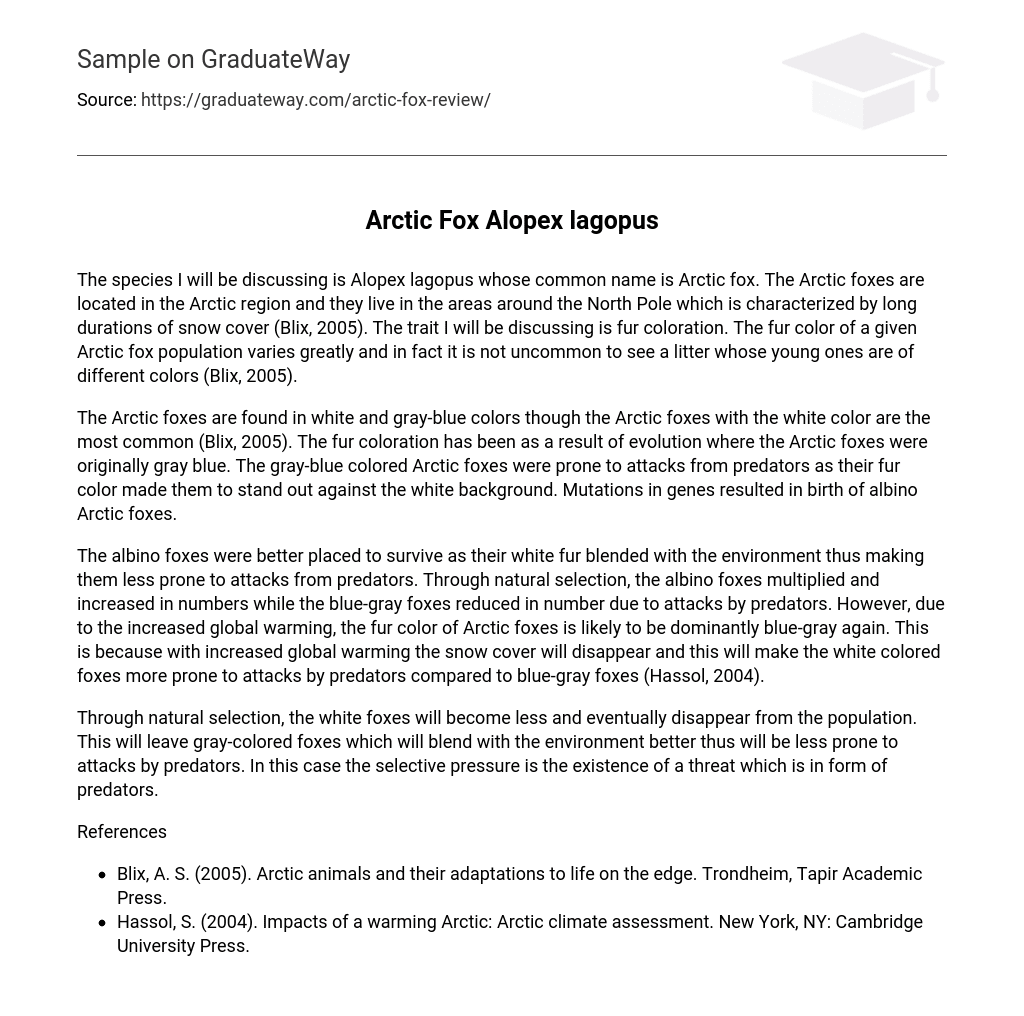The species I will be discussing is Alopex lagopus whose common name is Arctic fox. The Arctic foxes are located in the Arctic region and they live in the areas around the North Pole which is characterized by long durations of snow cover (Blix, 2005). The trait I will be discussing is fur coloration. The fur color of a given Arctic fox population varies greatly and in fact it is not uncommon to see a litter whose young ones are of different colors (Blix, 2005).
The Arctic foxes are found in white and gray-blue colors though the Arctic foxes with the white color are the most common (Blix, 2005). The fur coloration has been as a result of evolution where the Arctic foxes were originally gray blue. The gray-blue colored Arctic foxes were prone to attacks from predators as their fur color made them to stand out against the white background. Mutations in genes resulted in birth of albino Arctic foxes.
The albino foxes were better placed to survive as their white fur blended with the environment thus making them less prone to attacks from predators. Through natural selection, the albino foxes multiplied and increased in numbers while the blue-gray foxes reduced in number due to attacks by predators. However, due to the increased global warming, the fur color of Arctic foxes is likely to be dominantly blue-gray again. This is because with increased global warming the snow cover will disappear and this will make the white colored foxes more prone to attacks by predators compared to blue-gray foxes (Hassol, 2004).
Through natural selection, the white foxes will become less and eventually disappear from the population. This will leave gray-colored foxes which will blend with the environment better thus will be less prone to attacks by predators. In this case the selective pressure is the existence of a threat which is in form of predators.
References
- Blix, A. S. (2005). Arctic animals and their adaptations to life on the edge. Trondheim, Tapir Academic Press.
- Hassol, S. (2004). Impacts of a warming Arctic: Arctic climate assessment. New York, NY: Cambridge University Press.





